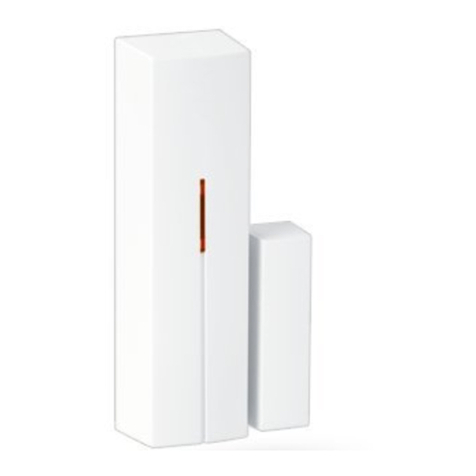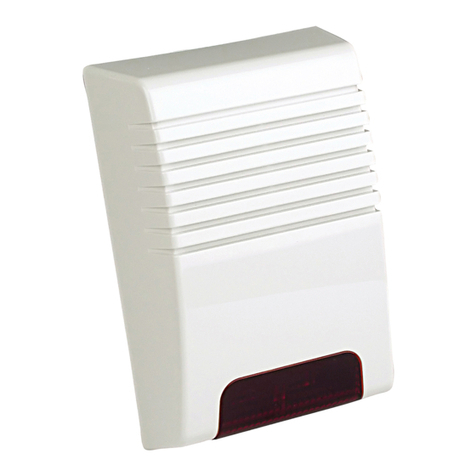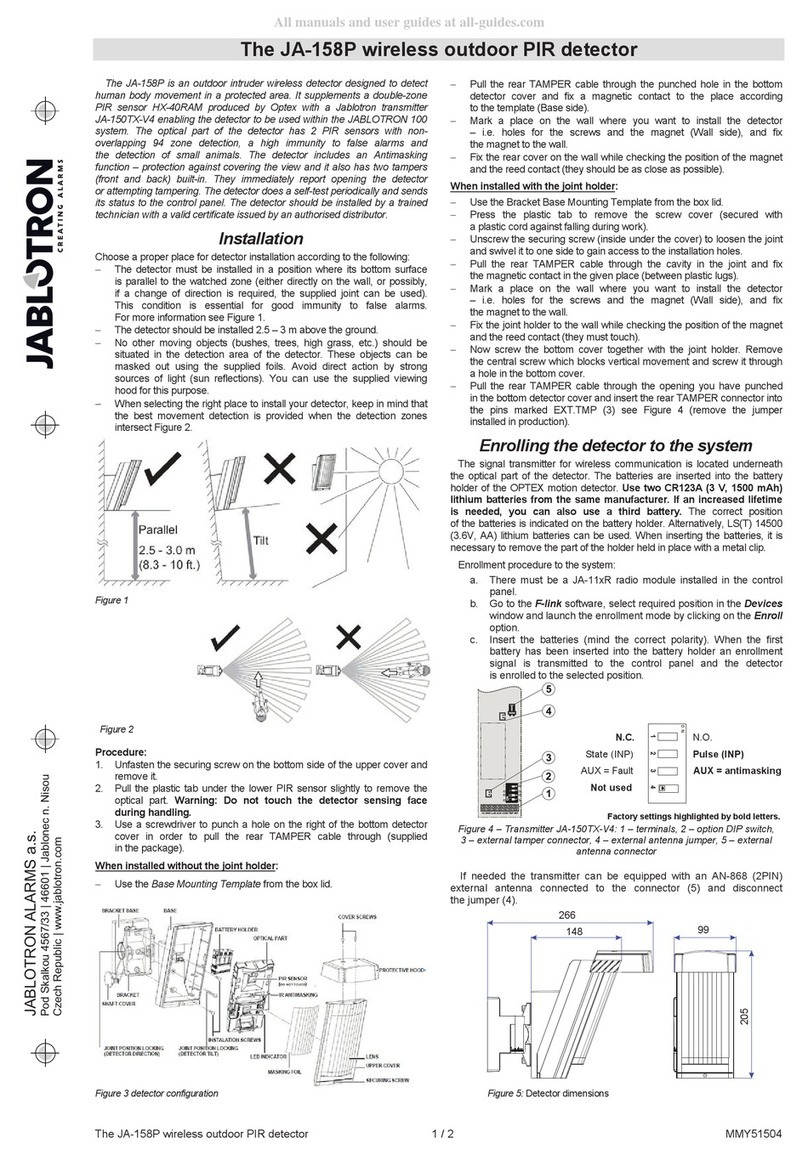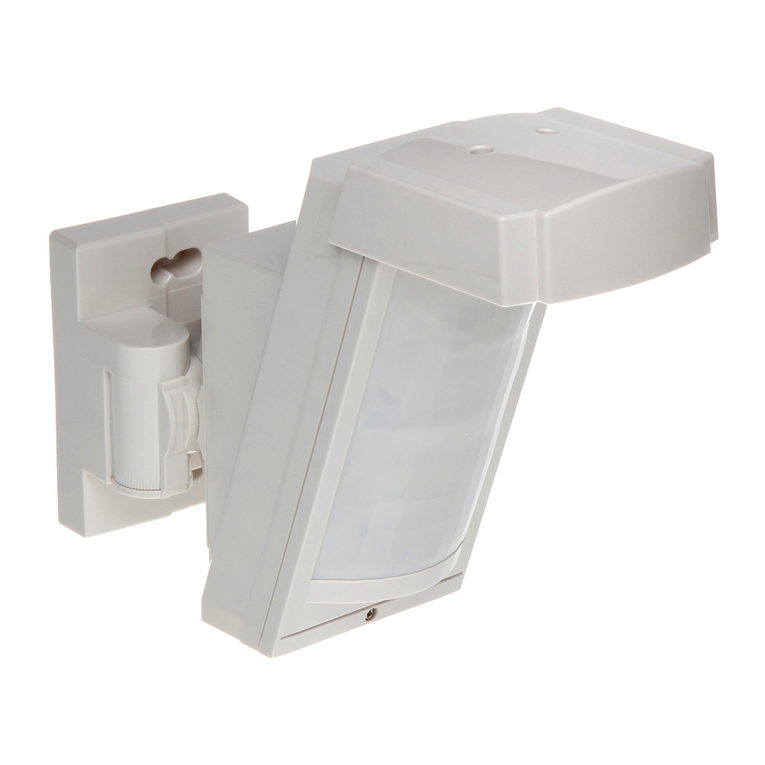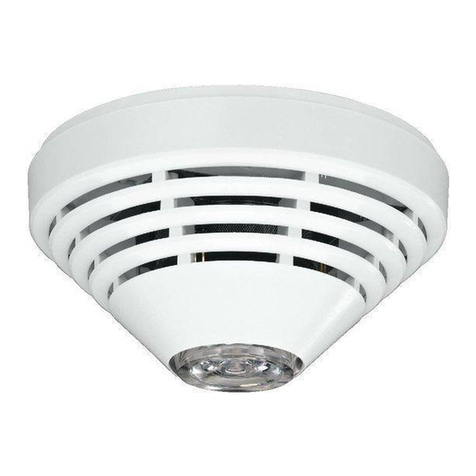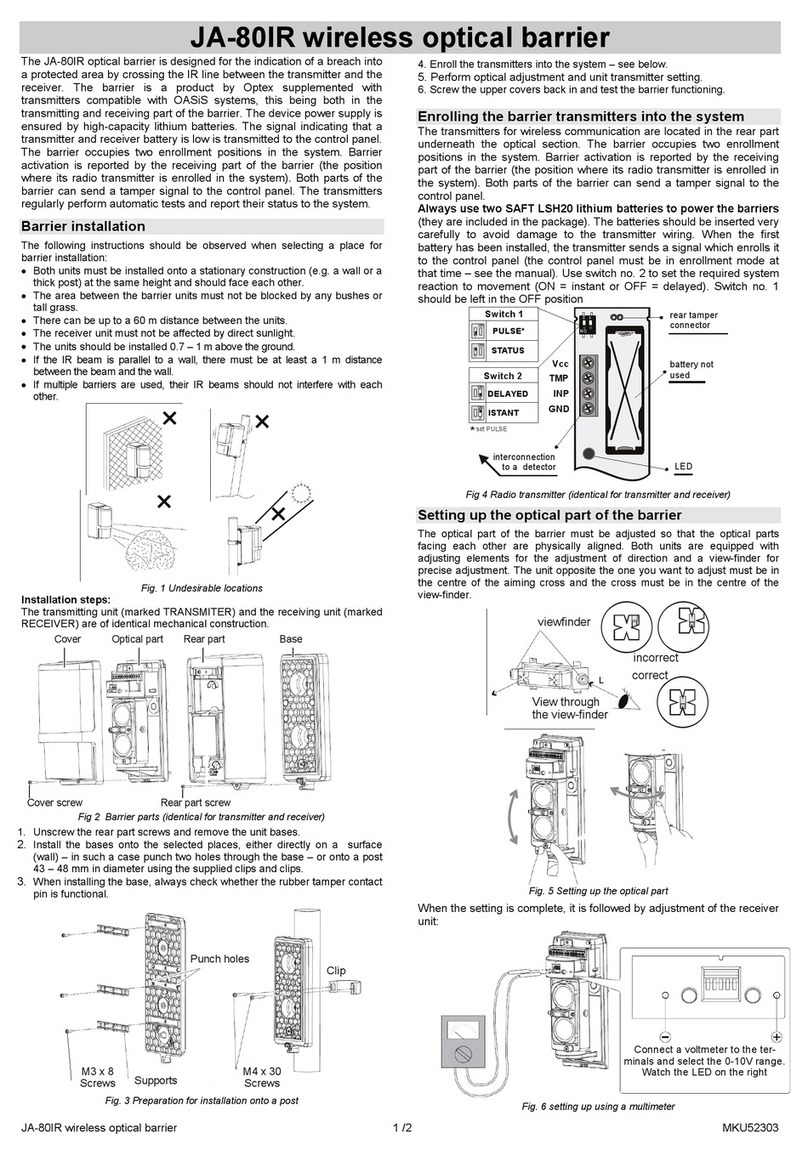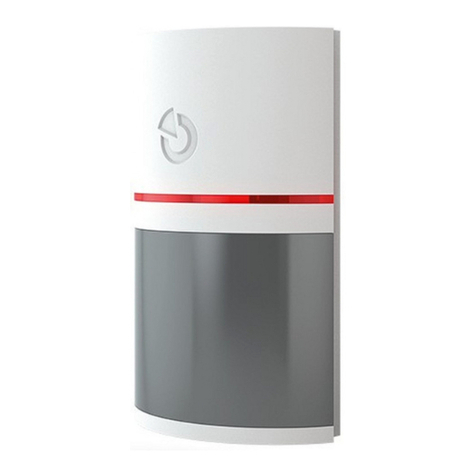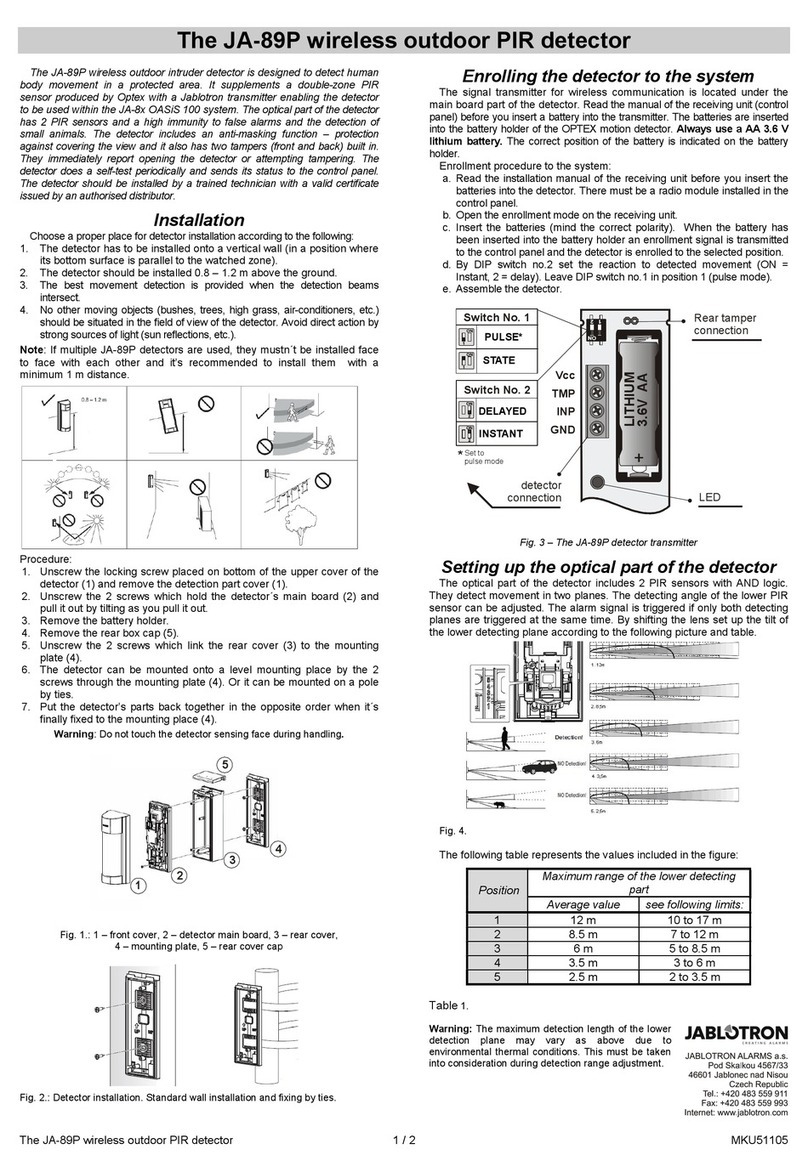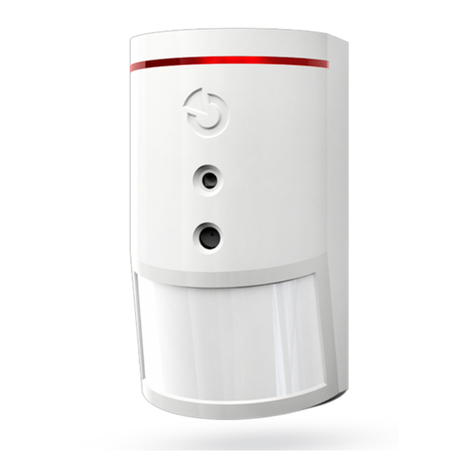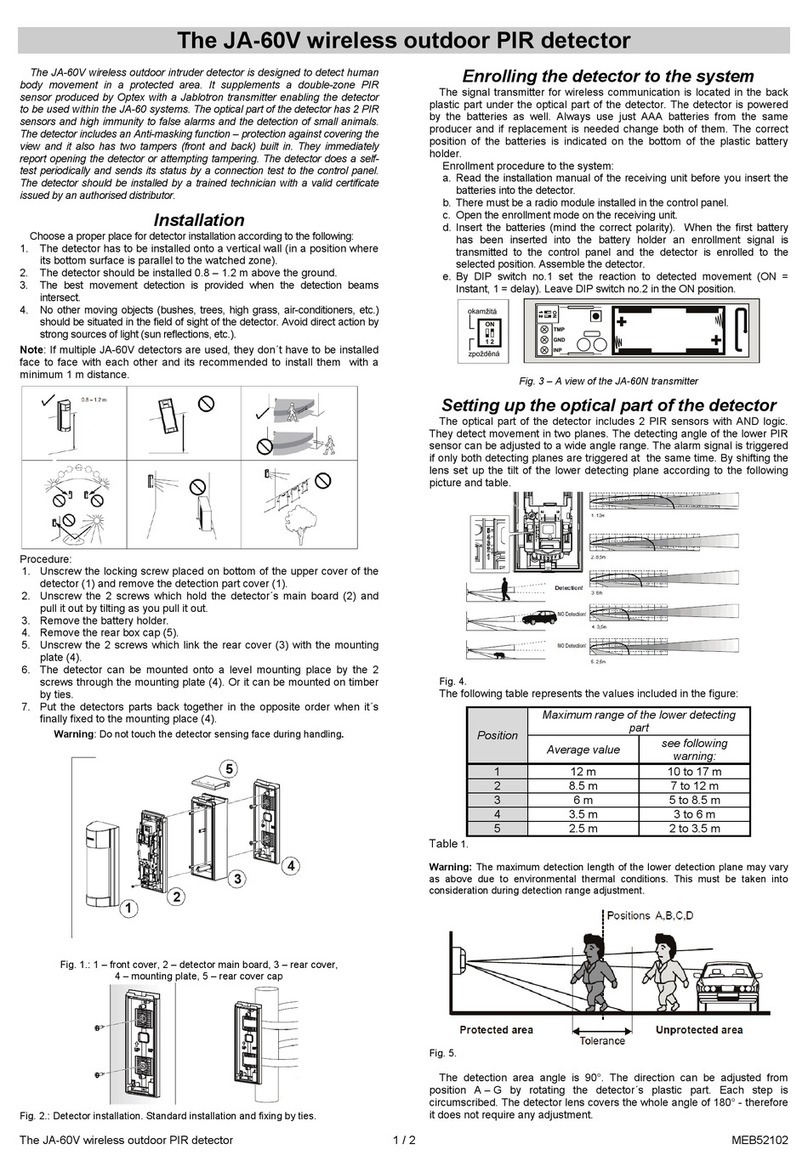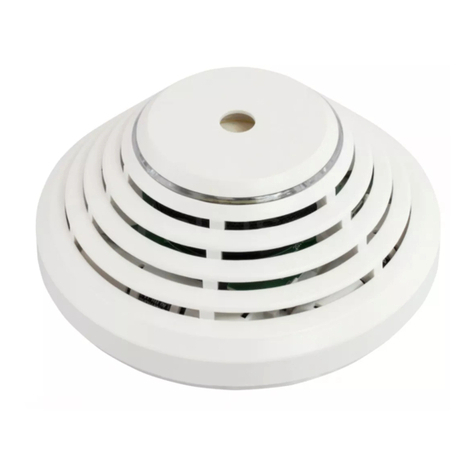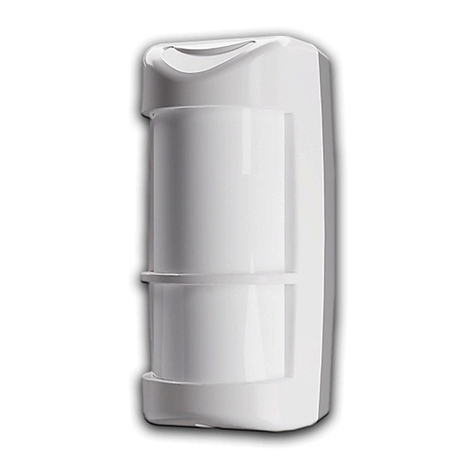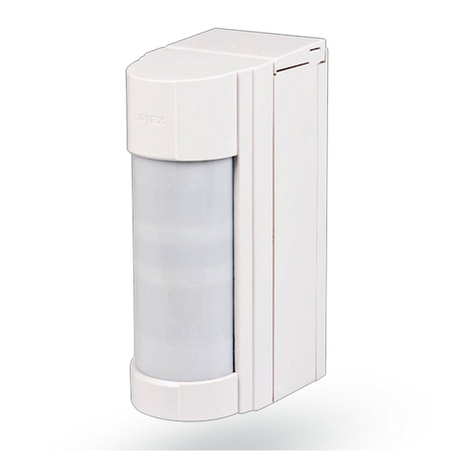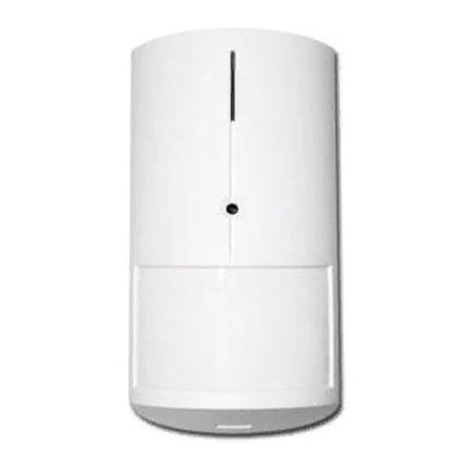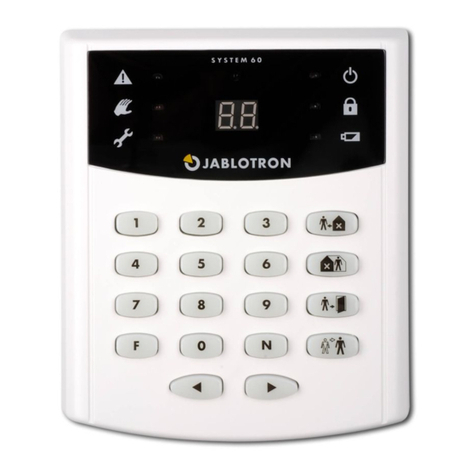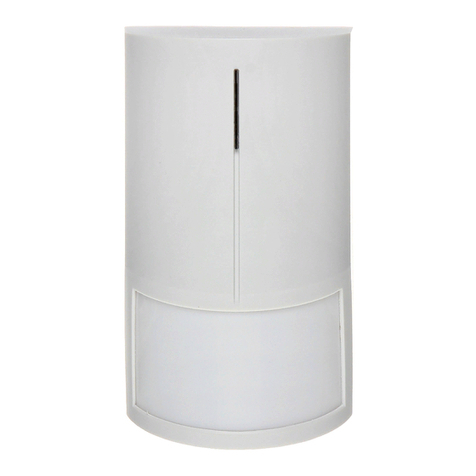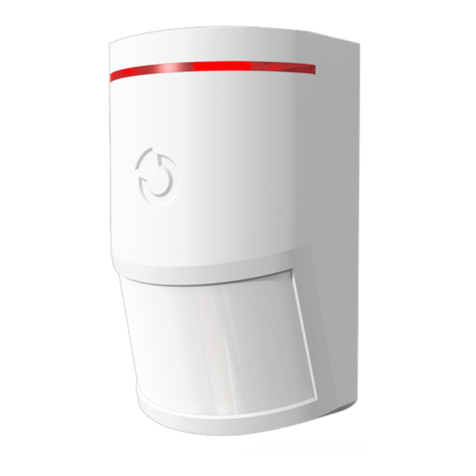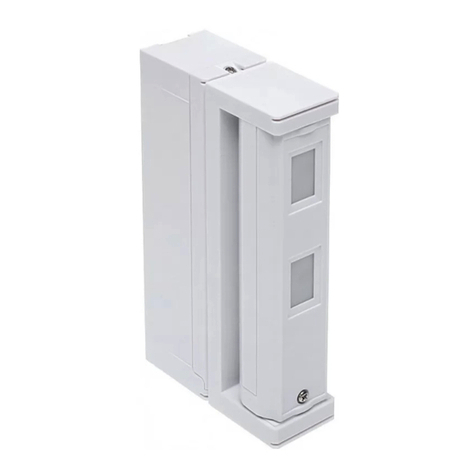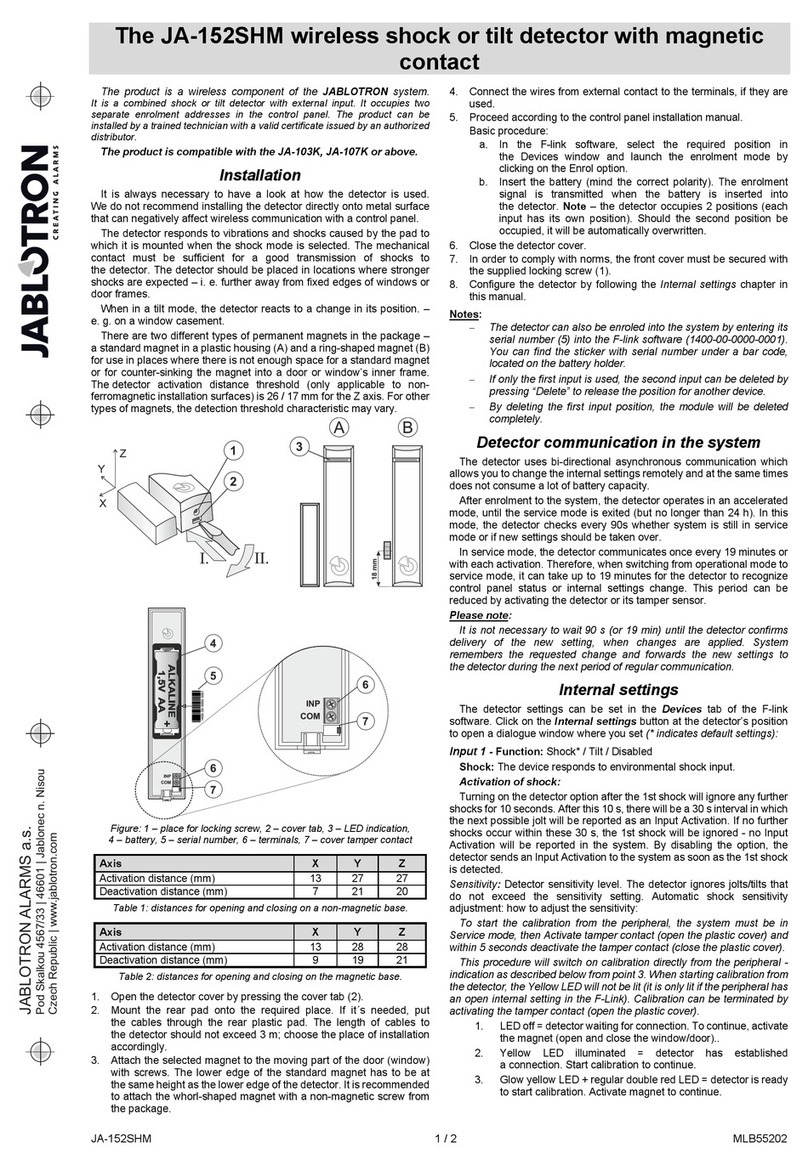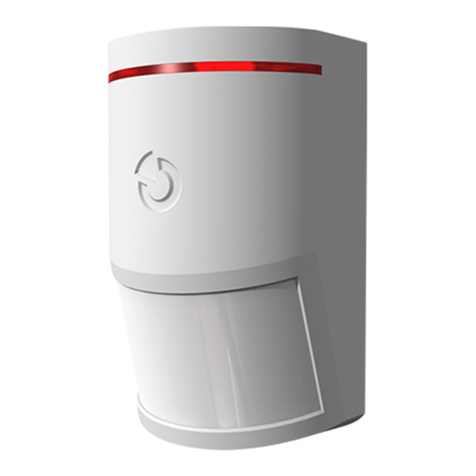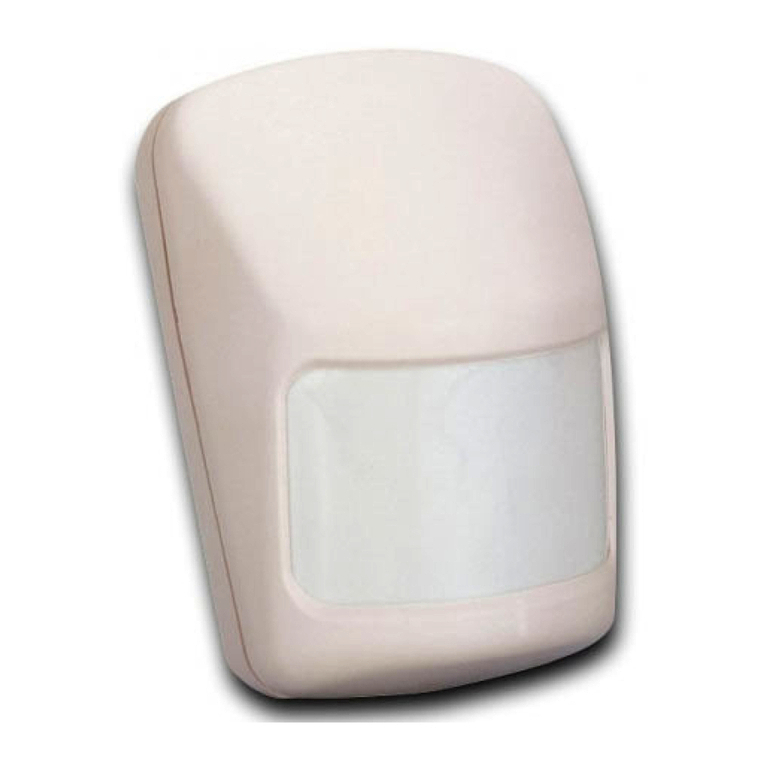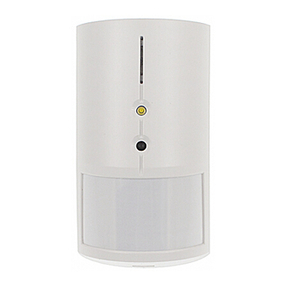The JA-151ST-A Wireless combined smoke and heat detector
The JA-151ST Wireless combined smoke and heat detector 2/3 MLW25101
b. When you insert all batteries into the detector, an enrollment
code is sent to the system which is confirmed with a short
flash of the LED indicator (3).
4. Insert the detector into the plastic base. The detector can
be inserted into the plastic base in one position only. It is marked
with arrows (4) on both plastic parts. Close the detector cover
by turning it clockwise (2).
5. Set the detector according to the Detector setting chapter.
Note:
In order to perform enrollment via F-Link easier, we recommend
removing the production code sticker, placing it on some paper
and writing down the location before installing the detector
The detector can also be enrolled into the system by entering its
serial number (6) in the F-Link program. All numbers stated under
the bar code shall be entered (for example: 1400-00-0000-0001).
When necessary, the AN-868 external antenna can be connected
to the detector to boost communication.
Detector setting
The detector properties can be set up in the Devices window
in the F-Link program (*indicates factory settings).
The Reaction option in the Devices tab allows you to set the type
of reaction of the system to the activation of the enrolled detector.
To set the detector’s behaviour, click on the Internal settings button
which will open up a dialogue window.
Reaction: Determines whether the detector will react to Smoke only,
Heat only, Smoke or heat, Smoke and heat simultaneously, see
the following table.
Smoke only EN 14604; EN 54-7
Heat only EN 54-5
*Smoke or heat EN 14604; EN 54-5;
EN 54-7
Smoke and heat
simultaneously
Temperature class EN-54-5: Determines the detector response speed
to an increase of temperature depending on time.
*A1 Fast response: The detector responds very fast to temperature
changes. It must respond within 1 min 40 sec at 30 °C/s.
*A2 Slow response: The detector responds more slowly to temperature
changes and is therefore more resistant to false alarms. It must react
within 2 min 23 sec at 30 °C/s.
Fire alarm acoustic indication
Source of acoustic indication: sets the source of a fire alarm
indicated by the detector (*Switched off, Own alarm only, Own and
system alarm, System only).
Length limitation of acoustic indication: limits the duration of the
acoustic fire alarm indication of the detector (can be set from 1 to 5
minutes or to *No limit)
Fire alarm indication from sections: Determines which sections will
indicate a fire alarm via this detector.
Acoustic indication of other types of alarms:
Indicate another type of section alarm: Selection determines which
sections will indicate other types of alarm via the detector
Alarm reaction: Determines whether detector indication will
be dependent on a EW (External Warning) or *IW (Internal Warning)
signal.
Time limitation of acoustic section: *No limit, 1,2,3*,4,5 minutes.
“No limit” means that it will correspond to the alarm length set
in the control panel parameters Warning: the maximum alarm length
of the control panel is 20 minutes.
Muting the system sirens by pressing the detector: when
activated, pressing the detector against its base will cancel acoustic
indication of the system sirens. Options: Switched off, During its own
alarm, During a system alarm, *Switched on.
Batteries: it’s possible to choose the type of batteries used
in the detector (*alkaline, lithium).
Test: Pressing this button will trigger an automatic detector test.
The result of the test will be indicated by showing a green or red circle.
The green circle indicates a successful test. The red circle indicates
a fault, in this case repeat the test. If the fault keeps appearing, then
it’s necessary to send the detector to the manufacturer’s service centre.
Fire alarm
Optical detector: When smoke enters the detector, it triggers an alarm,
the red LED starts flashing fast (8x/s approximately) and alternatively
triggers acoustic indication, depending on the detector settings. Indication
lasts until the premises (the detector’s detection chambers) are aired out.
Heat detector: The temperature increasing above the fixed limit triggers
an alarm, the red LED starts flashing fast (8x/s approximately)
and alternatively triggers acoustic indication, depending on the detector
settings. Indication lasts until the temperature is decreased, for example
by airing out the premises.
Muting the siren during an alarm: The integrated siren can
be muted by pressing the detector’s body against its base. The siren
is inactive for 10 minutes. If the detector still detects smoke or heat
then, the siren will be activated again.
When the need arises (e.g. in the case of detector failure),
it is possible to postpone siren reactivation by up to 12 hours. This can
be done by pressing the detector again for 5 s after muting the siren.
When the detector beeps, you have to release the pressure within 1 s.
The switchover to postponed siren mode is confirmed with 5 beeps.
The detector LED flashes all the time during the postponement.
Alarm memory: If enabled, the LED indication continues flashing
slowly (2x/s) to indicate a triggered detector for 24 hours after the alarm
has ended. Indication can be cancelled by unsetting the section where
the alarm had been triggered.
Tamper alarm: If the control panel isn’t switched to Service mode,
the detector will send a tamper signal to the control panel when
the detector’s body is removed from its base.
Note:
If the detector is used in autonomous mode, any emerging danger
is indicated acoustically and visually. This cannot be changed
Another type of alarm
The detector is capable of indicating other types of alarms apart from
alarms triggered by the detector itself. They can be alarms (intrusion,
tamper, panic, 24h, etc) of both the IW and EW type. This can
be configured for particular sections, the alarm length can also be limited.
Notes:
The indication of other types of alarm is also affected by
the settings parameters of the control panel (siren when partially
set, siren (IW output) when a tamper is triggered, etc.
When this detector triggers its own alarm it has a higher indication
priority. It will not indicate other alarms until its own triggered alarm
expires.
A fire alarm is always superior to other alarms. For example, when
a tampering alarm is in progress and a fire alarm is triggered,
the detector will stop indicating the first alarm and instead it will
start indicating the fire alarm immediately.
Detector testing and maintenance
The detector should be tested at least once per month. To test the
detector press the detector against the base and wait until an LED
indicator switches on. The LED flashing signals switchover to the test
mode. The LED is flashes for the whole duration of the test. When the
test is complete, the LED switches off. The detector then signals the result. If
the detector beeps once, the test has been done successfully. If a fault
is discovered, the detector beeps 3 times and the LED flashes 3 times.
In this case, repeat the test. If the fault still appears, send this detector
to a service centre. If the battery is low, there is no acoustic indication,
but just one flash when the test is completed.
The complete functioning of the optical part of the detector can
be tested with a test spray (e.g. SD-TESTER). The heat sensor can
be tested with heated air (e.g. with a hair dryer).
If the control panel is not switched to Service mode, a fire alarm
is triggered.
Warning: Never test the detector by starting a fire in the premises.
Fault indication
The detector checks its own functionality. If it discovers a fault, the LED
flashes and beeps 3 times and then flashes briefly 3 times every 30
seconds (a fault found during the automatic functionality test is indicated
the same way, see the Installation chapter). The fault can be
a malfunctioning detection chamber, the surrounding temperature out
of the operating temperature range (see Technical specifications) and other
detector faults.
An operating temperature fault will disappear when the surrounding
temperature returns to normal.
You can perform the detector test when it indicates a fault (see the Detector
testing and maintenance chapter) by refreshing information about
the measured temperature, smoke and dust particles in the chamber.
The measured data can be accessed in the F-link software,
Diagnostics tab. When the cursor hovers above the Status
of the detector a tooltip with the current information will appear.
Battery replacement
The detector checks the battery status, whether they are in use and
if the batteries are running low. The detector signals that they need
to be replaced by short flashes (3) repeated every 30 s. The information
is also sent to the control panel. Replace the batteries as soon
as possible with batteries of the same type and from the same
manufacturer.
